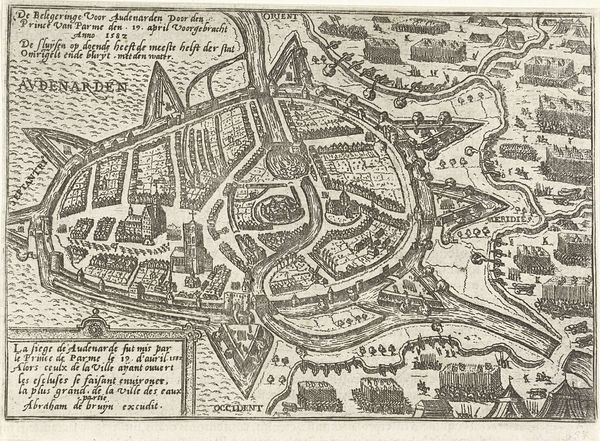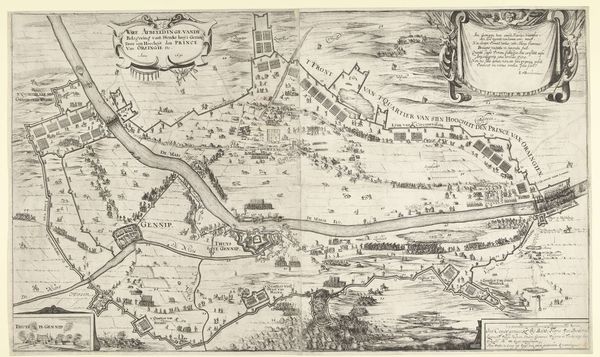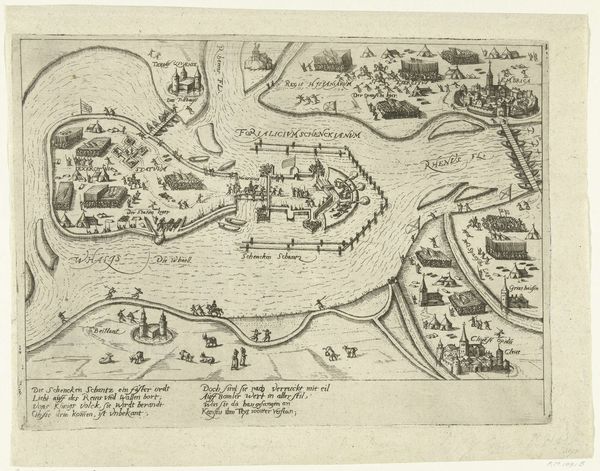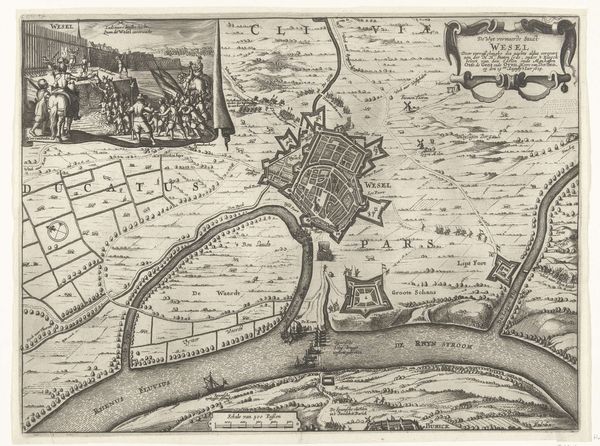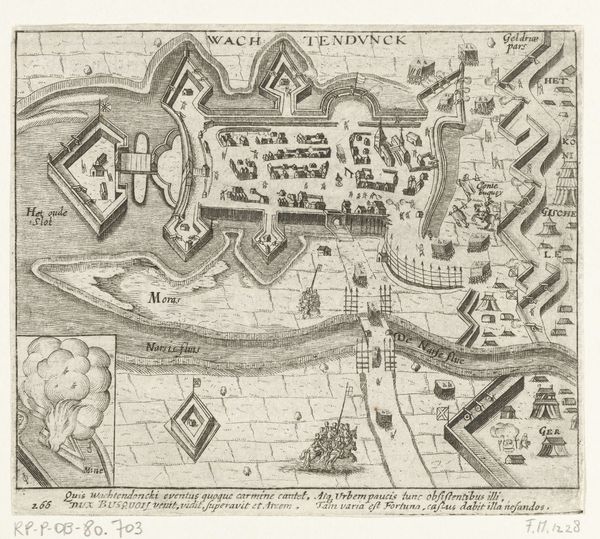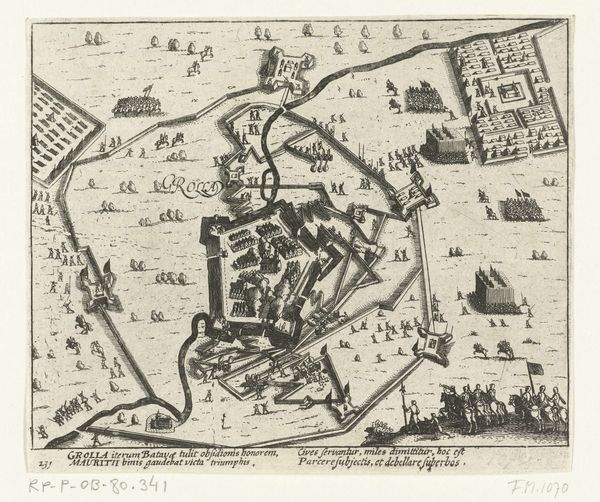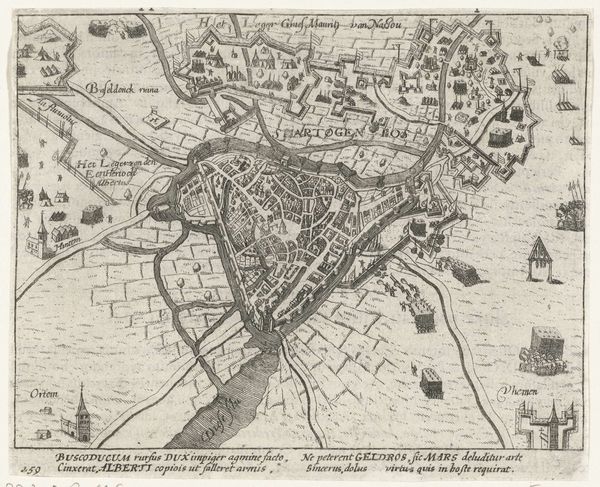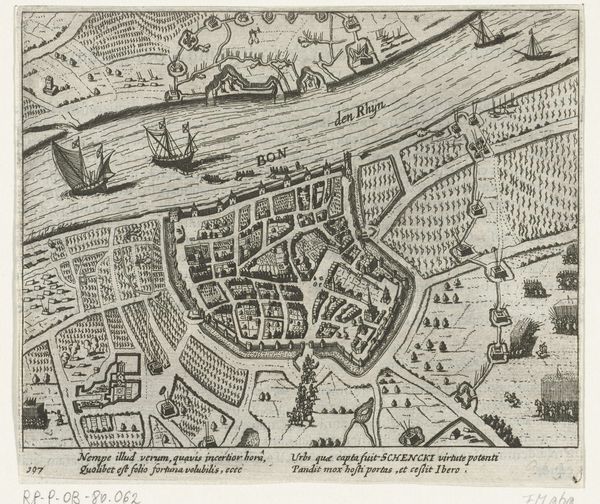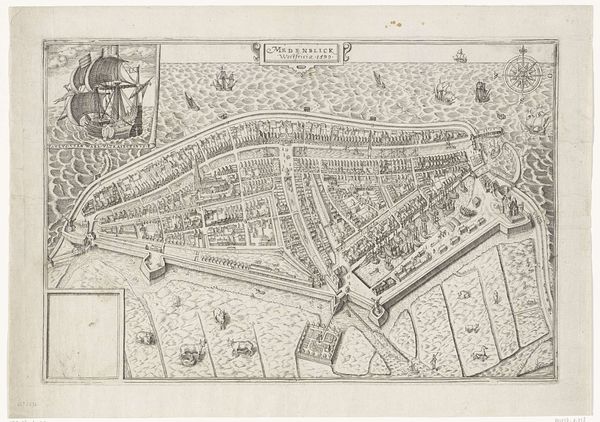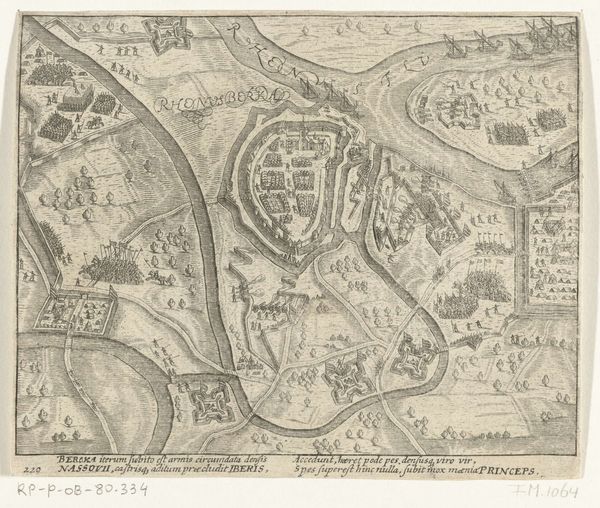
drawing, etching, ink, engraving
#
architectural sketch
#
drawing
#
baroque
#
etching
#
old engraving style
#
landscape
#
ink
#
cityscape
#
engraving
Dimensions: height 311 mm, width 256 mm
Copyright: Rijks Museum: Open Domain
Editor: This is "Kaart van het beleg van Maastricht door de Fransen, 1673," created in 1673 by Claes Jansz. Visscher. It's an incredibly detailed map rendered in ink, through etching and engraving, depicting the siege of Maastricht. The stark lines and meticulous detail almost make it feel like a technical document rather than a piece of art. What catches your eye when you look at it? Curator: What fascinates me is the convergence of cartography and power. Maps like this weren't just about geographic accuracy; they were strategic tools, reflecting and reinforcing military and political dominance. The meticulous depiction of fortifications, siege lines, and artillery positions serves a dual purpose: documenting the event and projecting the power of the besieging forces. Editor: So it's propaganda as much as record-keeping? Curator: Precisely. Consider who commissioned and consumed such images. This wasn’t for the average citizen. These images were often commissioned by the victors to showcase their tactical genius and military might. They were distributed amongst the elite, reinforcing the status quo. Think about how the 'gaze' of the map itself imposes a certain order and control onto the landscape. The power to survey and represent a territory equates to the power to control it, doesn’t it? Editor: Absolutely. It's like saying, "We don't just control this land, we understand it completely." The level of detail is also quite striking, considering it's from 1673. Curator: And that detail underscores the claim of knowledge and therefore, authority. The map becomes a symbol of French power over Maastricht, a visual assertion of their victory designed to solidify their rule and impress their rivals. Editor: I see it now! It is more than an illustration. Curator: Yes! It underscores the crucial public role of art and how socio-political agenda intertwine to influence the production of art. A fascinating intersection of history, power, and representation.
Comments
No comments
Be the first to comment and join the conversation on the ultimate creative platform.


